Indonesia, which is strongly supportive of renewable energy development, meets its obligation to extensively employ renewable energy through the mandatory mixing of palm oil-derived biodiesel with diesel, a fossil fuel. The success of the program is inseparable from the government's provision of incentives which involve paying the difference in cost between biodiesel and diesel through export taxes collected from producers of palm oil and its derivatives. However, the increase in the government's mandatory target is not in line with the higher revenue obtained with the result that under current policy conditions the government will not be able to provide incentives for the B30 plan during the next few years. This research presents a dynamic simulation modelling of Indonesia's biodiesel program and analyzes the policy applied in support of that program. A system dynamics model is proposed to enable decision-makers to understand the relationship between the different variables inherent in the system and the impact of different variables on the continuity of the biodiesel program in Indonesia. The system dynamics model consists of three sub-models: the palm oil production sub-model, the biodiesel demand and production sub-model and the biodiesel fund management sub-model. Fund management of biodiesel is specifically discussed, starting with the source of funds, through fund management, to the impact of fund availability on the biodiesel mandatory program's continuity. The simulation shows that increasing palm oil production capacity is insufficient in order to ensure the success of the government program. Simulations indicate that the biodiesel program will operate optimally if two prerequisites are satisfied; first, that the levy policy adopted is not dependent upon crude palm oil (CPO) prices and, second, that the provision of incentives is limited solely to those required by the prevailing Public Service Obligation (PSO).
1.
Introduction
This article deals with the nonlinear elliptic equation with measure data of the type
Here Ω⊂Rn (n≥2) is a bounded domain, the unknown u∈W1,P(Ω) with an N-function P(⋅) which will be introduced in Section 2, and A(x,∇u)∈L1loc(Ω,Rn). In (1.1), μ is a Radon measure defined on Ω with finite total mass |μ|(Ω)<∞. Moreover, if the measure μ is actually an L1-function, then
for a measurable subset Q⊂Ω. We assume that measure μ satisfies the following condition:
(M) There exists some θ0∈(0,n−1) such that
holds for all x0∈Ω and every R>0.
In this article, we assume that the Carathéodory vector field A:Ω×Rn→Rn is C1-regular in the gradient variable ξ, and satisfies A(x,0)=0, and the growth, ellipticity, and continuity conditions, i.e., there are constants 0≤s≤1, 0<ν≤L, and K≥1 such that
for any x,y∈Ω and ξ,ξ1,ξ2∈Rn. In (A1), the function ω:[0,∞)→[0,∞) has the following hypothesis.
Moreover, ω is assumed to satisfy the Dini-continuous condition:
for every 0<R≤1.
A significant example of (1.1) is the p-Laplacian type equation, for which s=0, p∈(1,∞), P(x)=xp, and A(∇u)=|∇u|p−2∇u. Then Eq (1.1) can be expressed as
The relevant research on the regularities of solutions to elliptic equations starts with Kilpeläinen and Malý [1,2], and extends with a different technique by Trudinger and Wang [3]. Later, Duzaar and Mingione make a further study in [4]. Those results show a standard fact that solutions to non-homogeneous p-Laplacian-type equations with measure data can be pointwise estimated in a natural way by involving the classical nonlinear Wolff potential Wμβ,p(x,R) [5], that is,
Based on the relationship between Wolff potential and Riesz potential, Mingione et al. [6,7] find out pointwise gradient estimates hold for general quasilinear degenerate equations by applying the Riesz potential
Baroni proves pointwise gradient bounds for solutions in terms of linear Riesz potentials in [8]. In addition, the caloric Riesz potential serves as a means for pointwise estimation of the spatial gradient of solutions to nonlinear degenerate parabolic equations [9].
Further, pointwise gradient estimates via the nonlinear Wolff potentials for weak solutions to various quasilinear elliptic equations with measure data are obtained by Mingione [10] and Yao [11]. More generally, pointwise potential estimates for elliptic equations and systems with Orlicz growth are studied in [12,13,14], respectively.
In recent years, a great deal of effort has gone into investigating nonlinear elliptic equations and systems involving measure data. Chilebicka et al. [15] study estimates including precise continuity and Hölder continuity criteria by the means of potential of a Wolff type; they also provide regularity estimates of the solutions and their gradients in the generalized Marcinkiewicz scale [16]. The existence of solutions in the framework of renormalized solutions is introduced in [17]. There are many interesting results in [18,19,20].
In this article, a weak solution to (1.1) is a function u∈W1,P(Ω) such that
whenever φ∈C∞0(Ω). Inspired by Mingione et al. [4,10,21], the main objective is to present pointwise potential estimates and interior Hölder continuity of weak solutions to (1.1) by using (1.4) in the Sobolev-Orlicz spaces.
We state our pointwise estimates in Theorems 1.1 and 1.2. It is important to note that θ0 in the following theorems will be introduced in (1.3). The first main result is the gradient pointwise estimates of u as follows.
Theorem 1.1. Let u∈C1(Ω)∩W1,P(Ω) be a weak solution to (1.1) under the assumptions (A1), (A2), (A3), Radon measure μ satisfy μ∈L1(Ω) and (M), and P be an N-function with Δ2(P,˜P)<∞ satisfying Assumption 2.4 and (2.12). There exists a constant C≡C(n,ν,L,K,s,θ0,CΔ2,C1)>0 and a positive radius ˜R<1 such that the pointwise estimate
holds whenever B(x0,R)⊂Ω and 0<R≤˜R. In (1.6), −∫ denotes integral average, Δ2-condition, CΔ2, and C1 will be described in Definition 2.3 and Lemma 2.5, respectively.
On the basis of Theorem 1.1, we demonstrate the pointwise estimate of u.
Theorem 1.2. Let u∈C0(Ω)∩W1,P(Ω) be a weak solution to (1.1) under the assumptions (A1)1, (A1)2, Radon measure μ satisfy μ∈L1(Ω) and (M), and P be an N-function with Δ2(P,˜P)<∞ satisfying Assumption 2.4, and (2.12). There exists a constant C≡C(n,ν,L,θ0,CΔ2,C1,diam(Ω))>0 and a positive radius R<1 such that for every r≤R the pointwise estimate
holds, where ε0 and α will be introduced in Lemmas 2.5 and 3.3, respectively.
Inspired by Mingione's result [10], the following theorem expounds the Hölder continuity of the solution u.
Theorem 1.3 (Interior Hölder type estimate). Let u∈C0(Ω)∩W1,P(Ω) be a weak solution to (1.1) under the assumptions (A1), (A2), let μ be a Radon measure satisfying μ∈L1(Ω) and (M), and let P be an N-function satisfying Δ2(P,˜P)<∞, Assumption 2.4, and (2.12). Then there exists constants α∈[0,1) and 0<R<1 such that for every x,y∈B(x0,2R)⊂Ω, there holds
where the constant C depends on n,ν,L,θ0,ω(⋅),CΔ2,C1, and diam(Ω).
Remark 1.4. Drawing upon the Riesz potential, our results present pointwise estimates and Hölder continuity within the more generalized framework of Sobolev-Orlicz spaces. Notably, (1.6) provides an estimate of ∇u, whereas (1.7) estimates u itself. We shall leverage Lemma 2.11 to relate u to ∇u.
In this article, we adopt several technical tools and methods in Sobolev-Orlicz spaces, and explore the properties of solutions of homogeneous equations to those of inhomogeneous equations with measure data. We first establish Proposition 3.2, which reveals the density of the Riesz potential and serves as a crucial conclusion in facilitating the proof of subsequent comparison lemmas. The proof of the comparison estimate is divided into two intricate steps; the first step requires Sobolev-type embedding, while the second primarily employs scaling changes. Our primary objective is to prove pointwise potential estimates and Hölder continuity, which is shown essentially by oscillation estimates of solutions. By utilizing summation methods and involving the Riesz potential, we proceed from deriving the estimates of the gradient of u to those of u itself. Ultimately, we employ the sharp maximal functions, and achieve the interior Hölder estimates of solutions.
This article is organized as follows: In Section 2, we state fundamental tools and definitions such as N-functions and maximal functions. Section 3 is devoted to the proof of Lemmas 3.4 and 3.9, and Section 4 presents supporting results, to gather Caccioppoli-type inequality and maximal estimate towards the proof of the main theorems. In the last section, we present the proofs of Theorems 1.1–1.3, respectively.
2.
Preliminaries
In this section, we give the definitions and tools of N-functions, function spaces; classical inequalities, and maximal functions.
2.1. N-functions
The following definitions and results are standard in the context of N-function; see [22].
Definition 2.1. A function P:[0,∞)→[0,∞) is said to be an N-function, if P is convex, differentiable, and its derivative P′ is a right continuous, non-decreasing function satisfying that P′(0)=0 and P′(t)>0 for t>0.
Definition 2.2. The complementary function ˜P:[0,∞)→[0,∞) is defined by
Definition 2.3. We say that P satisfied the Δ2-condition, if there exists CΔ2>0 such that
for all t≥0. By Δ2(P) we denote the smallest constant CΔ2. The function P is said to satisfy the ∇2-condition, if ˜P∈Δ2. Then we define
By the Δ2-condition of Definition 2.3, we can easily obtain
for every x,y≥0.
Assumption 2.4. Let P be a convex function that satisfies Δ2(P,˜P)<∞ as (2.1), and P is C2 on (0,∞). Moreover, let P′(0)=0, limt→∞P′(t)=∞ and uniformly in t≥0
Assumption 2.4 assures that P is an N-function.
We let P−1:[0,∞)→[0,∞) be the right-continuous inverse function of P, and (P′)−1:[0,∞)→[0,∞) the inverse function of P′. Then ~˜P(t)=P(t) and (˜P)′(t)=(P′)−1(t) hold. By [23], one has
hold uniformly in t≥0. By (2.2) and (2.3), we have
Lemma 2.5. [23] Let P be an N-function with Δ2(P,˜P)<∞. Then there exist ε0>0, C1>0 which only depend on Δ2(P,˜P) such that for all t≥0 and all λ∈[0,1], one has
From Definition 2.2 of N-function ˜P(⋅), it is easy to obtain that (2.5) holds for ˜P, i.e.,
Using (2.3) and (2.5), it is not difficult to obtain
In this article, we denote a∼b by Cb≤a≤C′b for two constants C and C′.
Lemma 2.6. [23] Let P be an N-function under Assumption 2.4, and A satisfies the continuity and growth condition of (A1)1, (A1)2. Then
Moreover,
uniformly in ξ∈Rn and x∈Ω.
Example 2.7. [24] Assume that P is a Young function such that
where p1>1 and p2∈R. The derivative P′ of P is as follow:
The complementary function ˜P satisfies
It is not difficult to verify that P(⋅) is an N-function satisfying Definitions 2.1–2.3, and Assumption 2.4.
2.2. Function spaces
In this article, we need the following definitions of function spaces. The classical Orlicz spaces LP(Rn) with its norm are given via [22]
and
If ‖f(x)‖LP(Rn) is finite, then f(x)∈LP(Rn). The Sobolev-Orlicz spaces W1,P(Rn) and its norm are given by [25]
and
If ‖f(x)‖W1,P(Rn) is finite, then f(x)∈W1,P(Rn). Both LP(Rn) and W1,P(Rn) are Banach spaces.
2.3. Classical inequalities
In this subsection, we recall several classical inequalities.
Lemma 2.8. (Young's inequality [26]) For all ε>0, there exist Cε, ˜Cε depending on Δ2(P,˜P), such that for all ζ1,ζ2≥0, there holds
and
Lemma 2.9. Let P be an N-function with the Δ2-condition. Then for all ε>0, there exists a constant C such that
for x,y>0, where the constant C depends on CΔ2 and C1.
Proof. By the mean value theorem, for x>y>0, there exists λ0∈(0,1) such that
We use (2.4) and (2.7) to get
Then applying (2.3) and (2.10), we obtain that
We complete the proof of Lemma 2.9. □
Let B be a measurable set with positive measure, and f:B→Rn a measurable function. We denote the integral average of f by
Lemma 2.10. (Jesen's inequality [27]) Let P be an N-function with Δ2(P,˜P)<∞. If f∈W1,P(B(x,R)), then there exists C≡C(n) for B(x,R)⊂Ω such that
Lemma 2.11. (Sobolev-Poincaré's inequality [27]) Let P be an N-function with Δ2(P,˜P)<∞ and satisfy Assumption 2.4. If f∈W1,P(B(x,R)), then there exist 0<θ1<1 and C>0 such that
holds whenever B(x,R)⊂Ω.
The following lemma describes an embedding into a space of continuous functions; see Theorem 8.39 in [28] and (2.22) in [24].
Lemma 2.12. If an N-function P satisfies that
then W1,P0(Ω)↪C0(Ω)∩L∞(Ω), that is, there exists a constant C≡C(n) such that
for all f∈W1,P(Ω).
The following iteration lemma plays an essential role in proving the Caccioppoli-type inequality (4.1).
Lemma 2.13. (Iteration lemma [29]) Let f:[γR,R]→[0,∞) be a bounded function such that the inequality
holds for fixed constants C2,κ≥0, and γR≤ϱ≤r≤R with 0<γ<1. Then we have
for a constant C depending only on κ.
2.4. Maximal functions and sharp maximal functions
Throughout this subsection, we provide powerful tools for Hölder estimate of Theorem 1.3. Analogously to the definition of the classical maximal operator in [30], we define the generalized maximal operator and sharp maximal function in Sobolev-Orlicz spaces.
Definition 2.14. [31] Let −1<τ<n, R<dist(x,∂Ω),x∈Ω, where ∂Ω is the boundary of Ω. Let f be a function in Orlicz space LP(Ω) or a measure with finite mass, and P be an N-function with Δ2(P,˜P)<∞. The function defined by
is called the restricted fractional τ generalized maximal function of f.
Definition 2.15. [31] Let β∈(0,1), x∈Ω, and R<dist(x,∂Ω), let f∈LP(Ω) and P be an N-function with Δ2(P,˜P)<∞. The function defined by
is called the restricted fractional β generalized sharp maximal function of f. For θ>0, we also denote
The following note gives us a connection between maximal functions and sharp maximal functions.
Remark 2.16. Combining the generalized sharp maximal functions and Lemma 2.11, we see that if Assumption 2.4 holds, then it follows that
3.
A comparison argument
In this section, we collect the relevant difference estimates and decay estimates, and consider the density of the Riesz potential Iμβ explicitly. We define v∈u+W1,P0(B(x0,2R)) as the unique solution to the homogeneous Dirichlet problem
The existence of v is guaranteed by a standard monotonicity argument; see [13]. One obtains the following control estimate.
Lemma 3.1. Let u∈W1,P(Ω) be as in Theorem 1.1 satisfying the continuity and growth condition of (A1), v∈u+W1,P0(B(x0,2R)) be a solution to (3.13)1, let P be an N-function with Δ2(P,˜P)<∞ and satisfy Assumption 2.4. Then the following estimate
holds, where C depends on n,ν,s,L.
We consider the estimate of the difference of a solution to (1.1), and that of the corresponding solution to the Dirichlet problem (3.1).
Proposition 3.2. Let u∈W1,P(Ω) be as in Theorem 1.1 satisfying (A1)2, v∈u+W1,P0(B(x0,2R)) be a solution to (3.1), let P be an N-function with Δ2(P,˜P)<∞, and satisfy Assumption 2.4, (2.12). Radon measure μ satisfies (M). There exists a constant C≡C(n,ν,C1) such that
Proof. Without loss of generality, we first assume that B(x0,2R)≡B(0,1) and |μ|(B(0,1))=1. Then we shall remove these two conditions for general situations.
Step 1. We assume that B(x0,2R)≡B(0,1) with |μ|(B(0,1))=1. By choosing φ≡u−v as a test function in (1.5), and using (1.1) and (3.1)1, we obtain
By using the ellipticity assumption (A1)2, we deduce that
By (3.4) and Lemma 2.12, it follows that
That is, there exists a constant C3 such that
We claim that there exists a positive constant C≡C(n,ν) such that
with 2R=1 and |μ|(B(0,1))=1. According to (2.8), we write ‖∇u−∇v‖LP(B(0,1))=k. We shall prove (3.6) in the following two scenarios. On the one hand, if 0<k≤1, then it follows from (3.5) that
On the other hand, if k>1, then we set k=(C1C3)−(2+ε0), where C1 and C3 are given in (2.5) and (3.5), respectively. It is obvious that 1C1C3>1, and so
By involving λ=C1C3<1 in (2.5), we obtain that
By (3.7) and (2.8), one finds that the norm k≤1C1C3, that is, 1C1C3≤1, which is contradictory to the condition 1C1C3>1. Therefore, the inequality (3.6) holds.
Step 2. Scaling procedures.
We assume that |μ|(B(x0,2R))=1, and we shall reduce to the case B(x0,2R)≡B(0,1) by a standard scaling argument. By letting
for y∈B(0,1), one has the following equations:
With the definition of Radon measure (1.2), we find the following relation between |˜μ|(B(0,1)) and |μ|(B(x0,2R)), namely,
Next, we shall reduce the general case to the special case |μ|(B(0,1))=1. We define
By (1.3), one has M≤1. Hence the new solution, coefficient, and datum become
Then we find that
hold in the weak sense and |ˉμ|(B(0,1))=1. Then by applying the result (3.6) in Step 1, one has
Considering (3.9) on B(x0,2R), then
we apply Lemma 2.5 with λ replaced by M to obtain
where C depends on n,ν, and C1. From (3.10), we complete the proof of Proposition 3.2. □
Via a classical approach, we have the following estimate inspired by [10].
Lemma 3.3. Let v∈W1,P(Ω) be a weak solution to the Dirichlet problem (3.1) under the assumptions (A1), let P be an N-function satisfying Δ2(P,˜P)<∞, Assumption 2.4 and (2.12). There exist constants α∈(0,1] and C4≡C4(n,ν,L)≥1 such that the estimate
holds whenever B(x0,ρ)⊂B(x0,R)⊂Ω.
We note that the estimate (3.11) is tenable by imitating the proof for the p-Laplacian equations.
Lemma 3.4. Let u∈W1,P(Ω) be a weak solution to (1.1) under the assumptions (A1)2. Let P be an N-function satisfying Δ2(P,˜P)<∞, Assumption 2.4, and (2.12). Then there exist constants ℓ≡ℓ(n,ν,L,CΔ2)≥1 and C≡C(n,ν,L,CΔ2,C1)≥1 such that
holds whenever B(x0,ρ)⊂B(x0,R)⊂Ω.
Proof. From the triangle inequality and (2.2), we see that
By applying (3.11), one carries out
Using the triangle inequality |∇v|≤|∇u−∇v|+|∇u| again, the inequality (3.12) leads to
with ℓ=C2Δ2C4. It follows from (3.3) that
Notice that ρ≤R with
we complete the proof of Lemma 3.4.
□
We also define w∈v+W1,P0(B(x0,R)) as the unique solution to the homogeneous Dirichlet problem with frozen coefficients
We have the following decay estimate.
Lemma 3.5. Let w∈W1,P(Ω) be a weak solution to (3.13) under the assumption (A1). Then there exist constants ˜α∈(0,1] and C≥1, both depending on n,ν,L, such that
holds whenever B(x0,ρ)⊂B(x0,R)⊂Ω.
Notice that the conclusion (3.14) is inspired by [32].
Lemma 3.6. Under the assumptions (A1) and (A2) of Theorem 1.1, with v as in (3.1) and w as in (3.13), there exists a constant C≡C(n,ν,L) such that
for B(x0,R)⊂Ω, where K and ω(R) are given in the assumption (A1).
Proof. We test Eq (3.13)1 with v−w. Since both v and w are weak solutions, then the assumption (A1)2 gives us that
By using (A1)3 with |x−x0|≤R and Young's inequality (2.9), we derive that
Finally, Lemma 3.6 is proved by using the assumptions (A2), (3.16), and (2.3). □
Lemma 3.7. Assume that u∈W1,P(Ω) is a weak solution to (1.1) satisfying (A1), (A2), and P is an N-function with Δ2(P,˜P)<∞, and satisfies Assumption 2.4, (2.12). Let w be defined in (3.13), and μ be a Radon measure that satisfies (M). There exists a constant C≡C(n,ν,L,s,CΔ2,C1) such that
The key to the proof of Lemma 3.7 is the triangle inequality as follows:
with (3.3), (3.15), and (3.2).
Corollary 3.8. Let u∈W1,P(Ω) be a weak solution to (1.1) under the assumptions (A1), (A2). Let P be an N-function satisfying Δ2(P,˜P)<∞, Assumption 2.4, and (2.12). Then there exists a constant C≡C(n,ν,L,CΔ2,C1)≥1 such that
holds whenever B(x0,ρ)⊂B(x0,R)⊂B(x0,2R)⊂Ω.
Our goal is to derive an oscillation decay estimate of ∇u. Based on Lemmas 3.5 and 3.7, we first involve the corresponding oscillation decay estimate (3.14) of ∇w, and then compare ∇u and ∇w by (3.17). We note that Lemma 2.10 and the triangle inequality play an essential role in the following lemma.
Lemma 3.9. Let u be a weak solution to (1.1) under the assumptions (A1), (A2), (M), Δ2(P,˜P)<∞, Assumption 2.4, and (2.12). Then there exists C≡C(n,ν,L,s,CΔ2,C1)>0 such that
for B(x0,ρ)⊂B(x0,2R)⊂Ω. Here the constant ˜α is introduced in Lemma 3.5.
4.
Caccioppoli-type inequality and maximal estimate
In this section, we use the estimate established in Proposition 3.2 to derive the Caccioppoli-type inequality and the maximal estimate. First, the following Caccioppoli-type inequality gives a connection between ∇u and u.
Proposition 4.1. (Caccioppoli-type inequality) Let u∈W1,P(Ω) be a weak solution to (1.1) with measurable coefficients and satisfy (A1)1, (A1)2. Let μ be a Radon measure with (M). Suppose P is an N-function satisfying Assumption 2.4. Then there exists a constant C≡C(n,ν,L,C1,CΔ2) such that
where B(x0,2R)⊂Ω.
Proof. We may assume that (u)B(x0,2R)=0 as if u solves (1.1) also u−(u)B(x0,2R) dose. Let η∈C∞0(B(x0,2R)) such that 0≤η≤1, and
Let v∈u+W1,P0(B(x0,2R)) be the weak solution to (3.1). We choose a test function φ:=vη to (3.1), and obtain
It is clear that
By Lemma 2.6 and (4.2), we deduce that
By (4.3), (4.4), Cauchy-Schwartz inequality, and Lemma 2.6, one has
According to Young's inequality (2.10), we derive that for ε>0, there exists ˜Cε such that
By (2.3) and Lemma 2.13, we deduce that
Dividing by |B(x0,R)|, one gives
Applying the triangle inequality with P(|∇u|)≤CΔ2(P(|∇u−∇v|)+P(|∇v|)) and (4.5), one has
In order to estimate the last term of (4.6), we use the triangle inequality again to obtain
Lemma 2.11 and the classical Hölder's inequality give us that
Thus we combine (3.3) and (4.6)–(4.8), and conclude that
This establishes the Caccioppoli-type inequality (4.1).
□
Based on the definition of maximal functions in Section 2.4 and the control estimate in Lemma 3.4, we present the following pointwise estimate involving the maximal functions.
Proposition 4.2. (Maximal estimate) Let u∈W1,P(Ω) be a weak solution to (1.1) under (A1), (A2). Let P be an N-function with Δ2(P,˜P)<∞, Assumption 2.4, and (2.12). Let Radon measure μ satisfy (M). Then there exists a constant C≡C(n,ν,L,θ0,ω(⋅),CΔ2,C1) such that
Here Iμn−θ0−α(x0,2R) is a Riesz potential that is introduced in (1.4). In (4.9), the constants ε0, α∈(0,1], θ1 and θ0 are given in Lemmas 2.5, 3.3, 2.11, and (1.3), respectively.
Proof. The key of the proof is to consider the radii R satisfying that R≤R0, where the quantity R0>0 is in dependence of the data n,ν,L,α, and ω(⋅). More precisely, by (A2), we shall choose R0 so that
where δ will be a small quantity that will be reduced at several stages, as a decreasing function of the quantities n,ν,L, and also α. The proof of Proposition 4.2 is accomplished through two steps, to which the following content is devoted.
By (2.15) and (2.13) with θ=1+ε0−α and τ=(1+ε0−α)θ1, there holds
By using Hölder's inequality, we obtain
Then the inequality (4.9) will follow if we are able to show that
Step 1. The case for small radii R≤R0.
We take 0<ρ≤r/2≤r≤R, and adopt the estimate in Lemma 3.4 with two radii ρ and r/2. There exists a constant C5≡C5(n,ν,L,CΔ2,C1) such that
Multiplying both sides of (4.13) by ρ1+ε0−α, and taking S=r/ρ, it follows that
for ρ≤r/2≤R/2. We choose the constant S≥2 large enough, which satisfies that
and take the supremum with 0<r≤R such that the following estimate holds
where 0<r≤R is equivalent to 0<ρ≤R/S. By (2.13) and (4.14), we obtain
with a constant C depending on n,ν,L,CΔ2,C1,S, and α.
On the other hand, we notice that
Recalling the constant S, and putting (4.15) and (4.16) together, we obtain the following:
The definition of the supremum shows that for any ε>0, there is r∈(0,R] such that
This leads to
Since ε is arbitrary, and 0<r<2r≤2R, the preceding estimates (4.18) and (4.19) show that there exists a constant C≡C(n,θ0) such that
Combining (4.17) and (4.20), we deduce the desired estimate (4.12) with R≤R0.
Step 2. Removing the condition R≤R0.
Our goal is to prove (4.12) without the restriction R≤R0. Taking R>R0 and recalling Definition (2.13), it is clear that
We apply (4.12) with radius R0, i.e.,
By the definition of Riesz potential (1.4), one has
It is apparent to enlarge the integral by
By using (4.21)–(4.24), we derive
Since Ω is bounded, then (4.12) holds.
Combining (4.10)–(4.12), we obtain (4.9), which means the proof of Proposition 4.2 is completed. □
5.
Proofs of Theorems 1.1–1.3
By establishing the preceding technical tools and lemmas, we are in a position to present the proofs of the main theorems. We first have the following proof.
Proof of Theorem 1.1. We set a sequence of balls {Bi}∞i=0 by
where 2Λ>1 will be chosen later. It is clear that Bi+1⊂Bi for every i≥0. We set two sequences {Ki}∞i=0 and {ki}∞i=0 by
We also introduce ˜k0 by
By (2.10), it is obvious that
as well as
Step 1. An estimate of the summation of Ki.
An application of Lemma 3.9 with B(x0,ρ)≡B(x0,R2Λ)⊂B(x0,R) shows that
where the constants C depend on n,ν,L,s,CΔ2, and C1. Using (5.1), we choose Λ≡Λ(n,ν,L,s,CΔ2,C1)>1 large enough such that
where ˜α∈(0,1] is given in Lemma 3.5. By (2.2), it is clear that
Hence there exists a constant C6>0 depending on n,ν,L,K,s,CΔ2, and C1 such that
Using (A2), we take ˜R small enough to obtain
It follows that if R≤˜R, then all Ri≤˜R. Applying the estimate (5.6) with R≡Ri−1, and noting that ω(⋅) is non-decreasing, it yields that
which can be simplified as
Via a summation, one deduces that
for C≡C(n,ν,L,K,s,CΔ2,C1) and for every integer m. This implies that
holds for every m∈N.
Step 2. An estimate of km+1.
Using (5.2), we have
By using Lemma 2.9 with x=|(∇u)Bi+1|, y=|(∇u)Bi|, we estimate the difference as
Considering the triangle inequality ||x|−|y||≤|x−y| and Lemma 2.10, we have
Hence there exists a constant C\equiv C(n, \, \nu, \, L, \, s, \, C_{\Delta_2}, \, C_1) such that
For each i , we choose \varepsilon = \varepsilon(i, n, C_{\Delta_2}, \Lambda) small enough such that
Then we have
Here we use the fact that the sum of geometric series is finite, i.e.,
By combining (5.9)–(5.12), and (5.4), there exists a constant C such that
Making use of (5.13), (5.8), and (5.4), one derives that for every integer m\geq 1 , there holds
For the second term on the right side of (5.14), one has
Using \Lambda > 1 , the method adopted in (4.20), and (1.4), we obtain that
holds with a constant C depending on n and \theta_0 . Inserting (5.15) in (5.14), we obtain the following inequality:
Step 3. An induction approach.
By setting
we shall use the mathematical induction to prove
Initial Step. If m = -1 , then by (5.4), we see that (5.17) is trivial. For the case m = 0 , (5.17) holds by using (5.13).
Inductive Step. Assuming that (5.17) is valid for any \tilde{m} < m , we shall prove it for m+1 . By (5.16), we have
Due to the fact that \omega(\cdot) is non-decreasing, we estimate
Considering the fact that \Lambda > 1 and the definition of d(\cdot) in (A3), we have
By applying (5.18), we complete the proof of the inequality (5.17).
For every Lebesgue point x_{0} of P(|(\nabla u)|) , we let m\rightarrow \infty , and show that
where C depends on n, \, \nu, \, L, \, K, \, s, \, \theta_0, \, C_{\Delta_2} and C_1 . Therefore, (1.6) has been proved. □
Via a similar approach to the previous proof, we are in a position to prove Theorem 1.2.
Proof of Theorem 1.2. We introduce a sequence of concentric balls \{\widetilde{B}_{i}\}_{i = 0}^{\infty} by
where H > 1 is a constant determined later, and r\leq R < 1 . Hence \widetilde{B}_{i+1}\subset B\left(x_0, \frac{r_i}{2}\right)\subset \widetilde{B}_i for every i\ge 0 . We define
We also introduce \widetilde{a}_{0} by
By (2.10) and (2.5), it is obvious that
as well as
One applies Lemma 2.11 and Hölder's inequality to obtain
Applying Lemma 3.4 with \rho\equiv r_{i+1} , R\equiv \frac{r_i}{2} , one has
where the constant C depends on n, \, \nu, \, L, \, C_{\Delta_2} , and C_1 . By Caccioppoli-type inequality (4.1) and Definition 2.3, we obtain
Combining (5.21) and (5.22) with r_{i+1}\leq r_{i} , it follows that
where C_{7} depends on n, \, \nu, \, L, \, C_{\Delta_2}, \, C_1 , and R . By choosing H\equiv H(n, \, \nu, \, L, \, C_{\Delta_2}, \, C_1, \, R) large enough, one has
which implies immediately that
We consider a summation with respect to i from 0 to m-1 , and deduce that
For every non-negative integer m , one writes
Adopting a similar approach as in the proof of (5.10), we have
and choose \varepsilon = (2H)^{-i(n+1)} sufficiently small. With the help of (5.19), it follows that there exists a constant C\equiv C(n, \, \nu, \, L, \, C_{\Delta_2}, \, C_1, \, R) such that
Analogous to (5.15), we obtain
Applying (5.23)–(5.25) and (5.20), one gets that for every integer m\geq 1 , there holds
By the dominated convergence theorem, for every Lebesgue point x_{0}\in P(|u|) , there holds
where constant C depends on n, \, \nu, \, L, \, \theta_0, \, C_{\Delta_2}, \, C_1 , and \mathrm{diam}(\Omega) . □
By establishing (5.26), we are ready to prove the result of Theorem 1.3.
Proof of Theorem 1.3. For any real number g , we observe that if u is a weak solution to (1.1), then u-g is still a solution to (1.1). Let B(x_{0}, 2R)\subset\Omega . We consider x, \, y\in B\left(x_{0}, \frac{R}{2}\right) satisfying that r: = |x-y| < \frac{R}{4} . By (5.26), it follows that
By (1.4), one has the following monotone property:
Via (2.2) and a direct computation, one has
We take g: = (u)_{B(x, 2r)} , and observe that B(x, r)\cup B(y, r)\subset B(x, 2r)\subset B\left(x, \frac{R}{2}\right) . Using Definition 2.3, we deduce that
Since 2r < \frac{R}{2} , then (2.14) gives us that
Then it follows from Proposition 4.2 that
To estimate the last integral, we use Caccioppoli-type inequality (4.1) and (4.19) to obtain that
Substituting (5.29) into (5.28) and considering 0\leq\alpha < 1 , it yields that
Combining (5.27)–(5.30) together with B(x, R)\subset B(x_0, 2R) , there is a constant C such that
where the constant C depends on n, \, \nu, \, L, \, \theta_0, \, \omega(\cdot), \, C_{\Delta_2}, \, C_1 , and \mathrm{diam}(\Omega) . Since R < 1 and \alpha\in[0, 1) , then the estimate (5.31) is the desired interior Hölder estimate of Theorem 1.3. □
6.
Conclusions
In this work, we establish pointwise potential estimates of weak solutions to a class of elliptic equations in divergence form with measure data. Our primary result is to employ the Riesz potential to prove the pointwise estimates of the solutions. The key innovation of this paper manifests in the proof of Proposition 3.2, which enables the relationship between measure data and the Riesz potential in the Sobolev-Orlicz spaces. Furthermore, we obtain Hölder continuity estimates for the solutions by establishing the Caccioppoli-type inequality and the maximal estimate. This systematic approach extends the potential estimates of regularity for nonlinear elliptic equations in the existing literature.
Author contributions
Zhaoyue Sui: Conceptualization, methodology, writing–original draft preparation; Feng Zhou: Supervision, funding acquisition, project administration, writing–review and editing. All authors have read and approved the final version of the manuscript for publication.
Use of Generative-AI tools declaration
The authors declare they have not used Artificial Intelligence (AI) tools in the creation of this article.
Acknowledgments
The authors would like to thank the anonymous referee for their careful reading and valuable comments. The authors are supported by the National Natural Science Foundation of China (NNSF Grant No. 12001333) and the Shandong Provincial Natural Science Foundation (Grant No. ZR2020QA005).
Conflict of interest
The authors declare no conflicts of interest regarding the publication of this article.










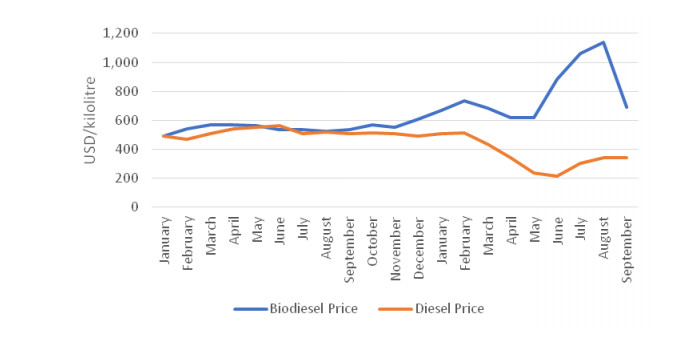
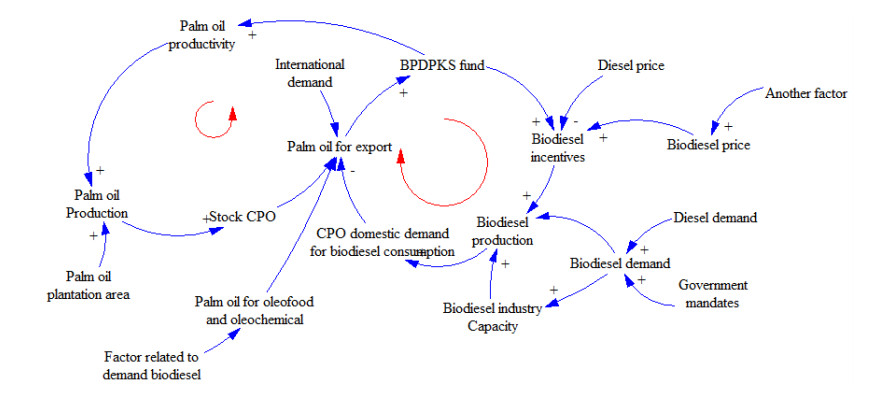

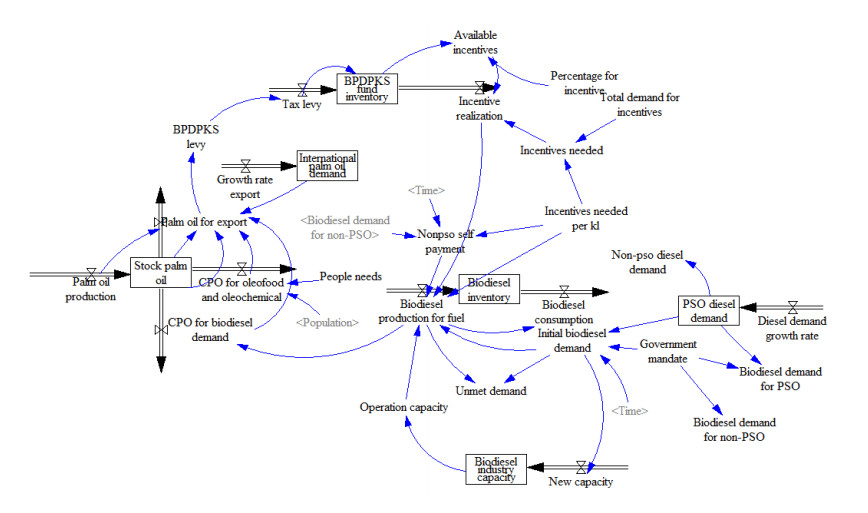
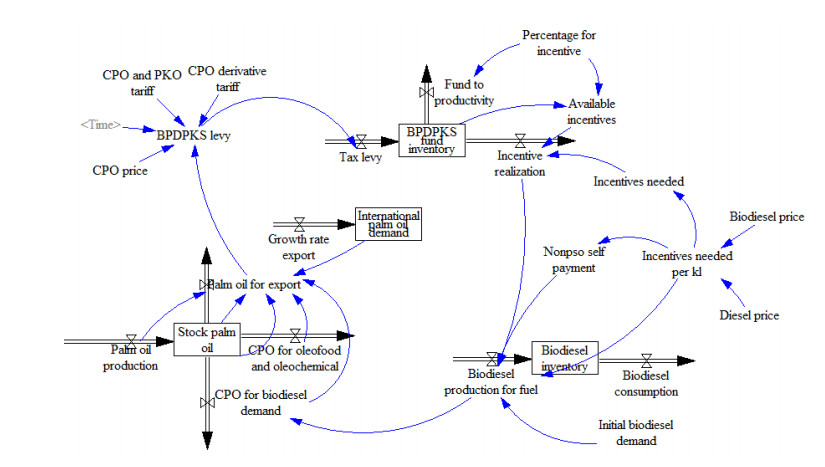
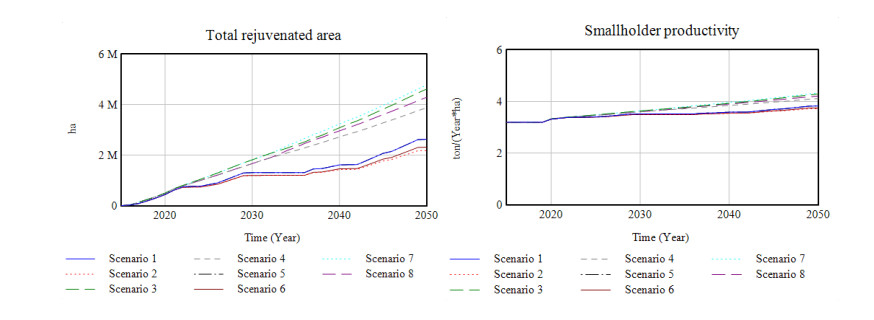
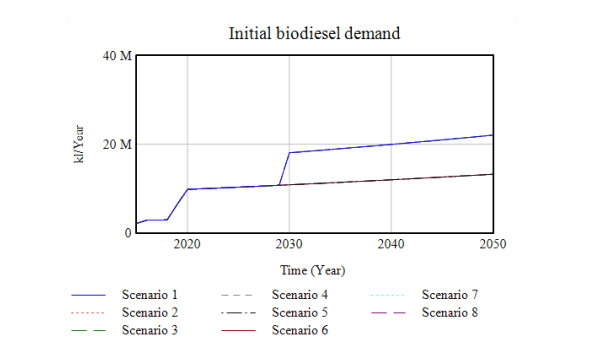
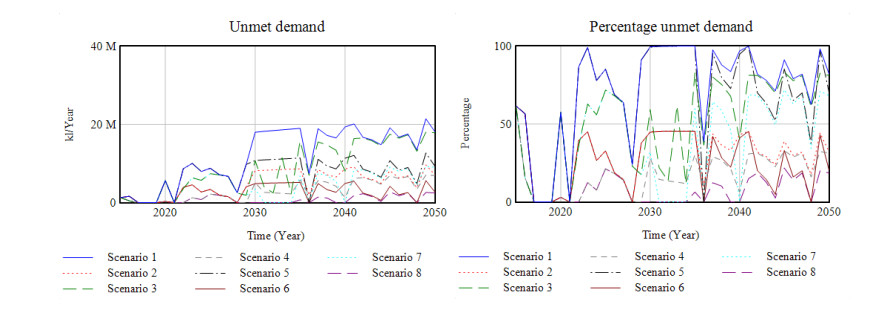
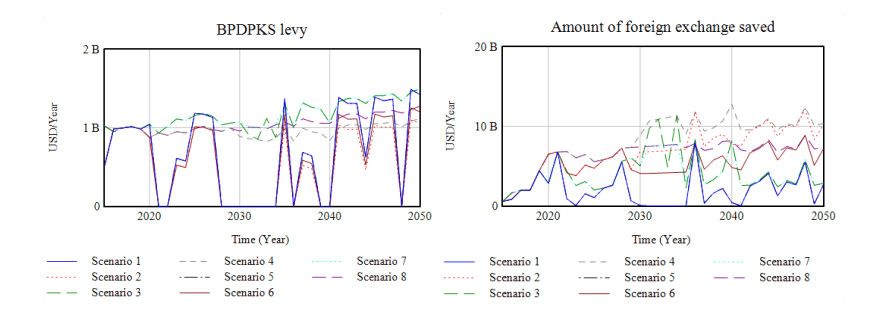


 DownLoad:
DownLoad: